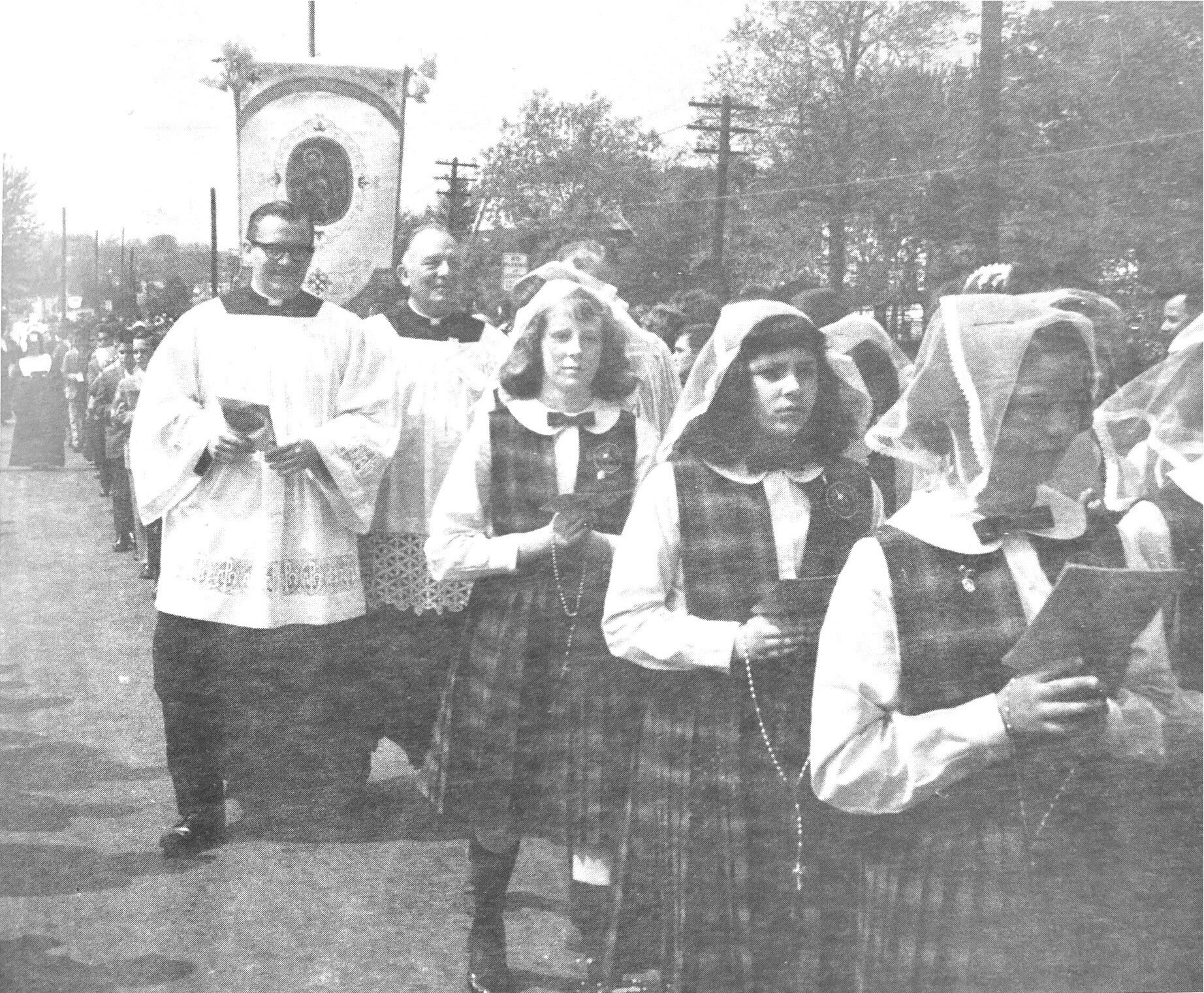
Our Rich History
of
Faith & Piety
Amid jubilee joys of an earthly celebration, we do not forget those priests, religious, and laity, faithful friends of Saint Joseph Parish, who have completed their tasks and await our prayers and our presence above. We pray that Our Lord, who has begun His work in them on earth, complete it in heaven. May His holy standard-bearer Michael stand behind them and recognize them as the earthly servants of the Master; may He lead them into the joys of eternal glory.
In October 1915, a group of 15 people met and appointed a committee to meet with Father Monville of Holy Spirit Parish in Sharon Hill. They sought the establishment of a mission of Father Monville’s parish in the young Collingdale borough. This mission would eventually flourish into the present Saint Joseph Parish.
Archbishop Prendergast (1911-1918) recognized the need for a parish in the broadening Collingdale area, and decided to approve the founding of a new parish. He announced his decision on February 5, 1916. Reverend Otho C. Gromoll was appointed Pastor on that same day.
Archbishop Prendergast (Archbishop of Philadelphia: 1911-1918) recognized the need for a parish in the broadening Collingdale area, and decided to approve the founding of a new parish. He announced his decision on February 5, 1916. Reverend Otho C. Gromoll was appointed Pastor on that same day.
On February 12, 1916, Father Gromoll celebrated the Holy Sacrifice of The Mass in the Collingdale Fire House Number 1. All Sunday and Holy Day Masses would be celebrated in the fire hall until the new Saint Joseph Church was completed.
Father Gromoll lived in a house at 603 Clifton Avenue, which he rented to be closer to the construction site of the new church and his parishioners. Daily mass was celebrated in a room on the second floor, called the turret room due to its rounded shape. This room was reserved solely for sacred purposes.
Collingdale Fire House Number 1 was generously made available to Saint Joseph Parish for the Celebration of Holy Mass on Sundays and Holy Days before the original building was completed for Saint Joseph Parish
603 Clifton Avenue, Collingdale
Our First Pastor
Reverend Otho C. Gromoll
{Pastor 1916-1945}
The Reverend Otho Gromoll of St. Agatha’s has been appointed pastor of the new parish at Collingdale…he was ordained by Bishop Prendergast on May 27, 1911. …As a spiritual director of the Rosary, Altar and Total Abstinence Societies, and especially of the Cadets, he has been eminently successful.
(The Catholic Standard and Times, Vol. 21 No. 13, Page 5, February 5, 1916)
Father stressed the importance of punctuality and the solemnity always attached to the celebration of Mass whether it takes place in a magnificent cathedral or Collingdale Fire House #1. The parishioners began to handle things in an organized way. A temporary folding altar was secured, and all the necessary appointments for the proper conduct of thae Mass were purchased or donated. All of these articles were carried to the Hall before Mass and had to be returned to nearby houses when Mass was completed.
Confessions were heard before Mass in a small room at the rear of the firehouse; the confessional consisted of a table and two chairs. The small congregation’s willingness to work tirelessly and at any task enabled Saint Joseph Parish to have a building of its own.
Archbishop Prendergast had purchased the land in anticipation of the need for a parish in this area, and it was paid in full. Plans were made for the new building to be erected at Bartram Avenue and what is now Woodlawn Avenue, which at that time was a dense woodland (extending to Parker Avenue, which is today is MacDade Boulevard.) The men of the parish had cleared the land to prepare the site for the construction, which began immediately.
The intervening months provided an opportunity to raise funds for the Parish. Every conceivable effort was employed: house parties, bake sales, card parties, and dances proved to be successful means of raising funds. In 1916, the parish began its famous annual “Downtown Card Party” and a Lawn Fete.



